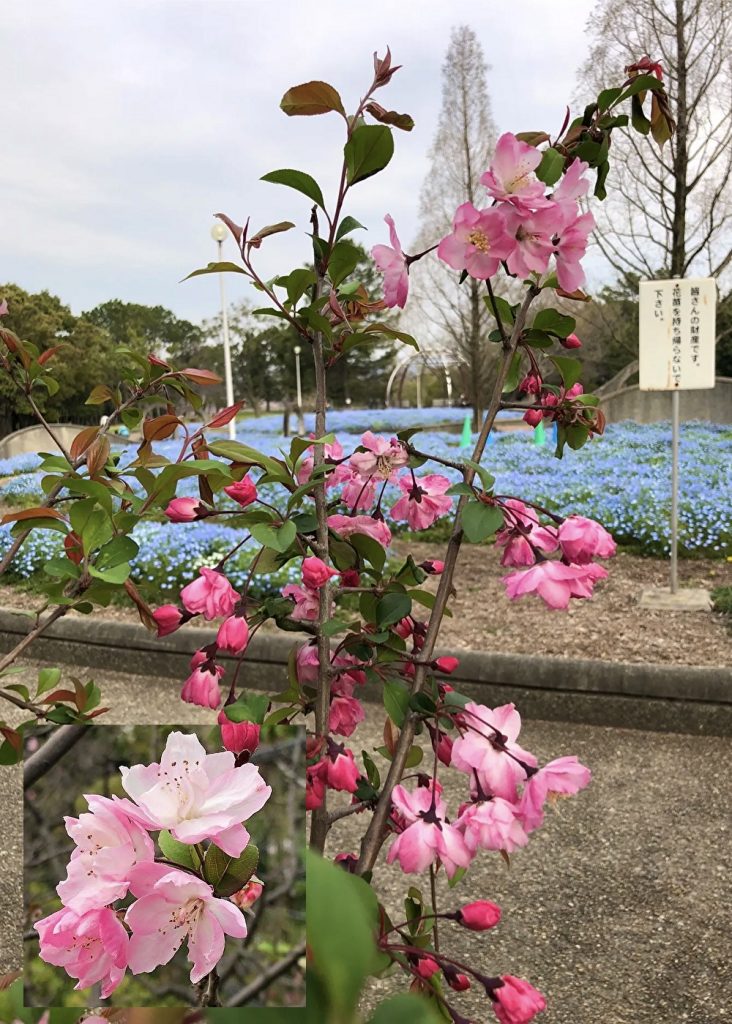
The Hanami front also moves northward, and when the Yoshino cherry trees begin to fall, the hanakaidou begin to bloom. In China, they are also known as “sleeping flowers,” as they are said to have originated from the story of the emperor commenting, “the sleeping apple tree has not yet slept enough,” upon seeing the beautiful Yang Guifei looking drowsy and slightly intoxicated. The flowers of the hanakaidou resemble both cherry blossoms and apple blossoms, which is not surprising as they all belong to the same rose family of plants. In autumn, the hanakaidou also produces small apple-like fruits. Its place of origin is China, and it was introduced to Japan in the early Edo period. While it is associated with the elegant and beautiful Yang Guifei, its flower language is “graceful and modest” rather than “alluring and beautiful.” The red buds before blooming are similar to cherries, and their drooping appearance is quite impressive.
花見前線も遠ざかり、ソメイヨシノが散り始めると花海棠が咲き始めます。ほろ酔い加減で眠そうにしている美しい楊貴妃を見て、皇帝が「海棠の眠り未だ足らず」と言ったという故事に由来して、中国では「眠花」とも呼ばれます。桜の花にも林檎の花にも似た花を咲かせます。それもそのはず、花海棠も桜も林檎も同じバラ科の植物です。花海棠も秋になると小さな林檎の様な実を付けます。原産地は中国で、江戸時代初期に日本に渡来しました。楊貴妃になぞらえて「艶麗」という花言葉もありますが、どちらかと言えば、淑やかで控えめな花です。 開花前の赤い蕾はサクランボにも似ていて、垂れ下がっている姿はとても印象的です。
